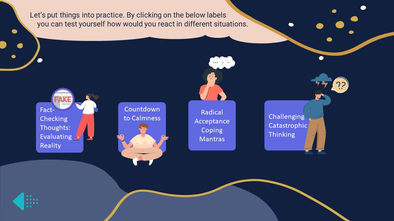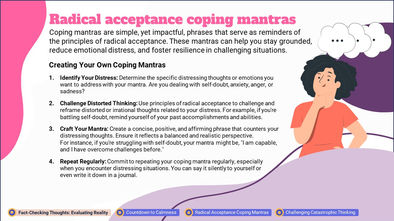THE DESIGN PROCESS
I tell your story through graphic design
I tell your story through graphic design
ILONA HAUK
My learning experience - Instructional design
Discovering effective prompts for ChatGPT 3.5 while exploring the art of E-Learning design
2023 August -
I started exploring E-learning design and adult learning a few months ago. I read Julie Dirksen’s book ‘Design for How People Learn’, took a related Udemy course, and collected other free materials and sources using Obsidian note-taking app. I also began following experts in this field on YouTube such as Devlin Peck and Tim Slade. I quickly realized that mastering e-learning design won't be a short journey even with my graphic design and presentation design experience backed up with UX/UI studies. By going step by step, I have been able to break down the learning process into manageable chunks, which has made it easier for me to stay on track. First, to put the new knowledge to use, I began practicing the creation of different e-learning activities on the topic of Radical acceptance I recently came across and found interesting.
At this point, my aim was to keep things simple and cost-effective for design purposes. Therefore, I utilized familiar tools within my budget, such as PowerPoint and vector graphics from my Freepik subscription. I refined the illustrations using Adobe Illustrator. While I acknowledge that I may not meet all the requirements of effective E-learning design at this stage, I am aware of these limitations. I plan to address these gaps in the next phase when I convert the design into the Articulate Storyline authoring tool for building interactive activities. Additionally, I am eager to explore other AI tools like Vyond or Powtoon for animated video creation and use Audacity to incorporate audio. Recognizing the importance of visuals and spoken words for deeper learning, I look forward to enhancing the overall learning experience. However, I understand that creating E-learning involves several crucial steps:
-
Performing GAP analyses, consulting with the Subject Matter expert. In my case I play the role of the SM too.
-
Defining learning objectives: Clearly outlining measurable learning objectives that are aligned with overall goals.
-
Storyboarding or prototyping: Creating a visual storyboard or prototype to outline content, interactions, and assessments. I would build and test the prototype in Figma as I learned in UX/UI design.
-
Design and Development: Converting the storyboard or prototype to a functional module with multimedia and interactivity in an authoring tool (in my case Articulate Storyline) considering Mayer's multimedia principles for managing cognitive load and Gagné's Nine Events of Instruction to enhance student learning.
-
Refinement: Reviewing and refining the module for consistency, clarity, and user-friendliness.
-
Testing: Conducting thorough testing for technical issues and compatibility.
-
User Feedback: Gathering feedback to assess effectiveness and make improvements.
-
Iteration: Iterating based on feedback for continuous improvement.
-
Evaluation: Evaluating the effectiveness of the e-learning module in terms of learning outcomes and overall impact based on the Kirpatrick's model.
In this post I do not showcase the full process. My focus was on content writing and experimenting with activities using basic tools.
1. Cooperating with ChatGPT 3.5 - Brainstorming, collecting, and structuring information;
Writing scenarios for the activities
Step 1 - Revising Bloom's taxonomy, evaluating different learning activities
First I asked ChatGPT to provide me with e-learning activity recommendations aligned with Bloom's Taxonomy. Blooms Taxonomy is an educational framework that categorizes cognitive skills into six levels, from basic recall to higher-order thinking (Knowledge, Comprehension, Application, Analysis, Synthesis, and Evaluation). It guides educators in creating learning objectives and assessments that foster critical thinking. This step was not really necessary but it was a good opportunity to refresh and widen my knowledge of this topic.
Step 2 - Collecting information about the subject matter of Radical acceptance techniques, paring the techniques with e-learning activities
I had to act as a Subject Matter Expert which means I needed to collect, understand and structure information about Radical acceptance, the chosen topic for this project. I ended up with much more information I needed, so I had to reduce the content to an appropriate level. At the end of this phase I decided to work with four Radical acceptance techniques. I pared the chosen techniques with e-learning activities from Step 1.

Step 3 - Reviewing the flow of the conversations I had with ChatGPT 3.5, generating final prompts and writing detailed scenarios for each activities
That was the most exciting part. I was amazed by the quality of the content and the speed at which it was provided by ChatGPT 3.5. I reviewed the conversations a had with ChatGPT 3.5 in Step 1 and 2 and generated the final prompts for the content of the activities.
Click on the below galleries to see the results.
2. Visualizing the e-learning activities
Introduction to the subject matter, the four Radical acceptance techniques
I came across Radical acceptance techniques a couple of month ago and decided to choose four techniques that i found on PositivePsychology.com. to practice e-learning activity design. Please note, that these techniques only provide a sneak peek into Radical acceptance, for more information visit the website.
Identifying cognitive distortions
Drag and drop activity
John is a college student, has an upcoming final exam in a challenging course...
In this activity, learners are presented with John's negative thoughts and asked to identify and label the cognitive distortions present in his thinking. "Labeling Activity" is a cool way to become a thought detective and help learners feel better by understanding and dealing with those sneaky negative thoughts.
Countdown to Calmness technique
Branching scenario
As John's final exam approaches, his anxiety continues to escalate...
Learners are presented with a situation, and their choices lead to different paths or branches in the scenario. The feedback and consequences of each choice help learners understand the consequences of their decisions and encourage active learning. It reinforces the concept of using sensory activities and counting techniques to ground oneself in the present moment during stressful situations, promoting active learning and skill application.
Harnessing the power of positive affirmations
Matching Exercise
Matching coping mantras with the right situations is a fun and useful way to practice using these positive phrases in real life. It helps learners remember when to use them, and it can make challenging times feel a little bit easier.
Catastrophe vs. Reality sorting
Sorting activity
This activity helps learners internalize the concept of distinguishing between catastrophic thinking and reality in everyday situations. It's a self-paced, interactive exercise that engages learners in critical thinking and self-reflection.





































